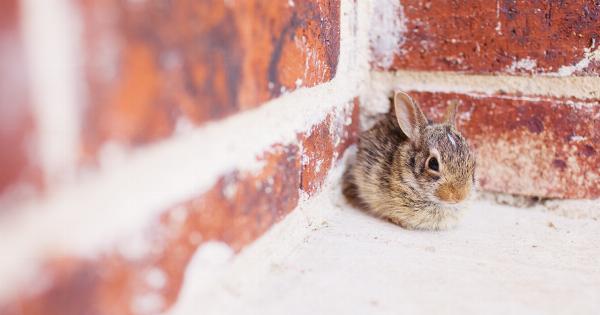External otitis, also known as swimmer’s ear, is a common condition that affects both children and adults. It is an infection of the outer ear canal, caused by bacteria or fungi.
In children, external otitis can be particularly uncomfortable and can lead to temporary hearing loss if not treated promptly. This article will discuss the signs and symptoms of external otitis in children and provide tips on how to recognize and manage this condition.
Signs and Symptoms
External otitis usually starts with mild symptoms that gradually worsen over time. It is important for parents to pay attention to any changes in their child’s behavior or complaints about their ears.
The following are common signs and symptoms of external otitis:.
1. Ear Pain
One of the most common symptoms of external otitis is ear pain. Children may complain of aching, throbbing, or sharp pain in their ear. The pain may worsen when the child touches or pulls on their ear.
2. Itching
Children with external otitis often experience intense itching in and around the ear. They may constantly scratch or rub their ear to relieve the itchiness.
It is important to discourage excessive scratching as it can further irritate the ear canal and increase the risk of infection.
3. Redness and Swelling
The infected ear canal may appear red, swollen, and inflamed. Parents may notice visible signs of irritation or discharge from the ear.
It is essential to avoid any attempts to clean the ear with cotton swabs or other objects, as this can aggravate the condition and potentially lead to further complications.
4. Discharge
In some cases, external otitis may cause the ear to produce an unusual discharge. The discharge can be clear, yellowish, or even bloody. If there is excessive drainage or foul odor, it is important to seek medical attention promptly.
5. Hearing Loss
Children with external otitis may experience temporary hearing loss. The inflammation and swelling in the ear canal can block sound waves from reaching the eardrum, resulting in reduced hearing ability.
If your child seems to have difficulty hearing or frequently asks for repetition, it is important to have their ears evaluated by a healthcare professional.
6. Sensitivity to Touch
The infected ear canal can become sensitive to touch, causing discomfort when pressure is applied. Children may wince or pull away when their ear is touched or pressed. This sensitivity is a common symptom of external otitis.
7. Tenderness of the Jaw and Neck
In more severe cases, external otitis can cause tenderness and discomfort in the jaw and neck area. Children may complain of pain when opening or closing their mouth, chewing, or turning their head.
These symptoms may indicate that the infection has spread to surrounding tissues and require immediate medical attention.
8. Fever
In some instances, external otitis may be accompanied by a low-grade fever in children.
Elevated body temperature is a common sign of infection, and it is important to monitor your child’s temperature and seek medical advice if it persists or worsens.
9. Difficulty Sleeping
The ear pain and discomfort associated with external otitis can disrupt a child’s sleep pattern. They may have difficulty falling asleep or staying asleep due to the constant pain or itchiness in their ear.
If your child has been having trouble sleeping and no apparent cause can be identified, it is worth considering external otitis as a potential factor.
10. Irritability and Changes in Behavior
Children experiencing ear pain and discomfort may become irritable, fussy, or exhibit changes in their behavior. They may become more withdrawn, have difficulty concentrating, or show a lack of interest in regular activities.
It is important to address these behavioral changes and consider the possibility of external otitis.
When to Seek Medical Attention
If you suspect your child has external otitis, it is important to consult a healthcare professional for a proper diagnosis and appropriate treatment. However, there are certain situations where immediate medical attention may be required:.
1. Severe Ear Pain
If your child is experiencing severe, excruciating ear pain, it is best to seek medical attention promptly. Severe pain may indicate a more advanced infection or the presence of complications, such as an abscess.
2. Spiking Fever
If your child develops a high fever (above 100.4°F or 38°C), it may signify a more serious infection. Fevers can be a sign that the infection has spread beyond the ear canal and may require urgent medical evaluation.
3. Worsening Symptoms
If your child’s symptoms worsen despite at-home care or over-the-counter treatments, it is important to consult with a healthcare professional.
This can include increased pain, increased discharge, worsening redness or swelling, or any other concerning changes.
4. Persistent Symptoms
If your child’s symptoms persist for more than a few days without improvement, it is advisable to seek medical attention. Prolonged symptoms may indicate a stubborn infection that requires a specific treatment plan.
Prevention and Treatment
There are several steps you can take to prevent external otitis in your child:.
1. Keep Ears Dry
Ensure your child’s ears are dried thoroughly after bathing, swimming, or any activity that involves water exposure. Use a towel to gently dry the ears, or a hairdryer set on the lowest setting held at least 12 inches away from the ear.
Excess moisture in the ear can provide a breeding ground for bacteria or fungi.
2. Avoid Inserting Objects into the Ear
Discourage your child from inserting anything into their ears, including cotton swabs, pencils, or any other objects. These can cause injury, push wax deeper into the ear canal, or create an entry point for bacteria or fungi.
3. Use Earplugs or a Swimming Cap
If your child regularly swims or participates in water activities, consider using earplugs or a swimming cap to protect their ears from excessive water exposure. These can help prevent water from entering the ear canal and reduce the risk of infection.
4. Treat Allergies and Colds Promptly
Allergies and colds can lead to nasal congestion and increased mucus production, which can contribute to external otitis. It is essential to manage allergies and colds promptly to minimize the risk of developing an ear infection.
5. Consult a Doctor for Earwax Removal
If your child frequently experiences a buildup of earwax, consult a healthcare professional for safe and appropriate earwax removal.
Avoid using cotton swabs or any other objects to clean the ears, as this can push the wax deeper into the ear canal and increase the risk of infection.
Conclusion
Recognizing the signs and symptoms of external otitis in your child is crucial for early detection and effective management.
By being aware of the common symptoms and knowing when to seek medical attention, parents can ensure prompt treatment and prevent complications. Additionally, taking preventive measures can help reduce the risk of external otitis in the first place. Remember, if in doubt, always consult a healthcare professional for an accurate diagnosis and appropriate treatment.




























